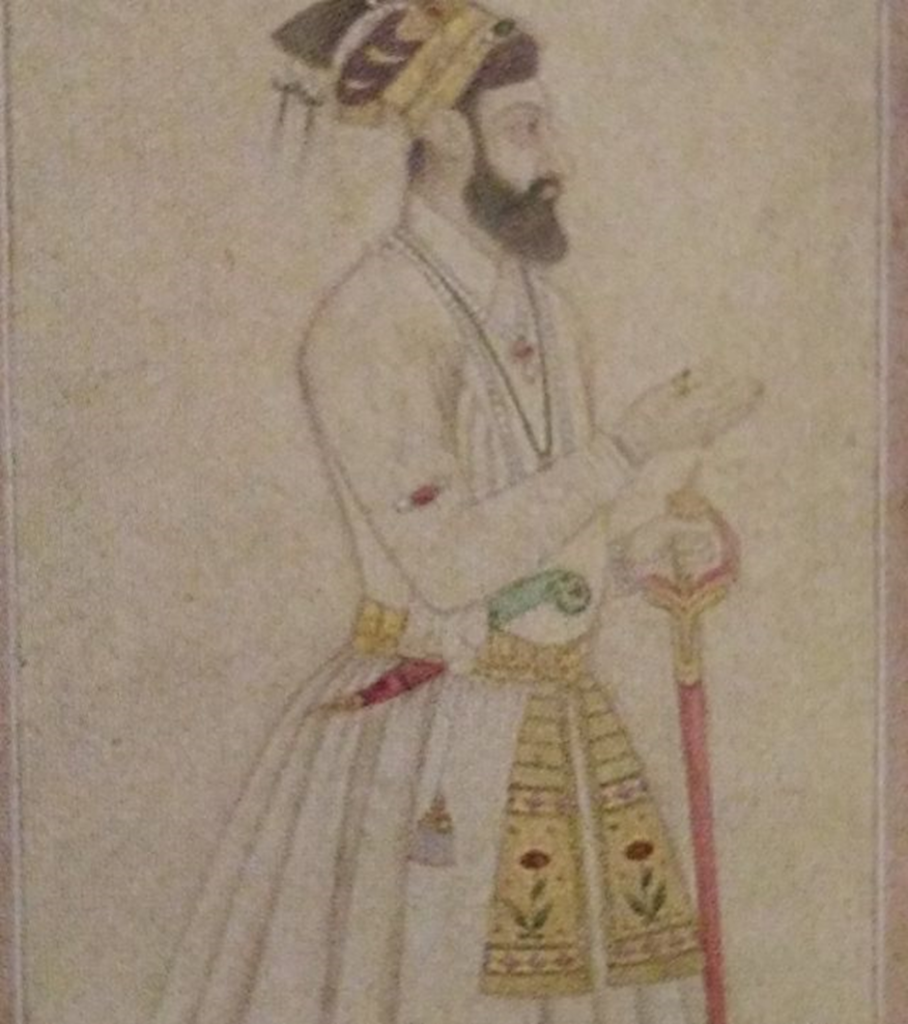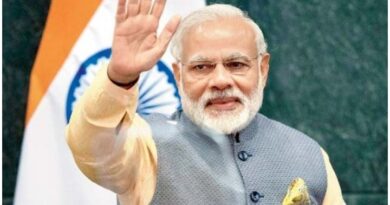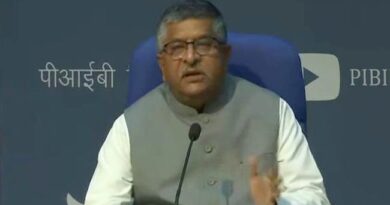Did Aurangzeb really hate Hindus?
Prime Minister Narendra Modi addressed the nation on 21 April from the Red Fort on the occasion of the 400th Prakash Parv of the ninth Sikh Guru Tegh Bahadur. Referring to the sacrifice of Guru Tegh Bahadur, he said that Gurdwara Sheeshganj Sahib reminds us how great was the sacrifice of Guru Tegh Bahadur ji to protect our great culture.
He said, “At that time there was a storm of religious fanaticism in the country. In front of our India, who considered religion as the subject of philosophy, science and self-research, there were people who had committed violence and atrocities in the name of religion.”
“At that time, India had a great hope to save its identity in the form of Guru Tegh Bahadur ji. At that time Guru Tegh Bahadur ji, becoming ‘Hind di Chadar’, stood as a rock in front of Aurangzeb’s tyrannical thinking.”
After the mention of Aurangzeb in PM Modi’s address, it started trending on social media as well.
Among the Mughal emperors, only one person who failed to make a place among the Indian public was Alamgir Aurangzeb. The image of Aurangzeb among the common people is that of a Hindu-hating religious fanatic, who did not even spare his elder brother Dara Shikoh to fulfill his political objectives.
Moreover, he even kept his aged father a prisoner in the Agra Fort for the last seven and a half years of his life. Recently, a Pakistani playwright Shahid Nadeem wrote that the seeds of partition in India were sown when Aurangzeb defeated his brother Dara. Jawaharlal Nehru also presented Aurangzeb in his book Discovery of India, published in 1946, as a fanatic and archaic.
Audrey Truschke’s book ‘Aurangzeb – The Man and the Myth’, an American historian, states that this argument is wrong that Aurangzeb destroyed the temples because he hated Hindus.
Truschke, who teaches South Asia History at the Rutgers University in Newark, writes that this image of Aurangzeb is attributed to British historians who promoted Hindu-Muslim animosity under the British divide and rule policy. In this book, she also tells that if Aurangzeb’s rule had been shorter by 20 years, he would have been assessed differently by modern historians.
49 years rule India
Aurangzeb ruled over 150 million people for about 49 years. During his rule, the Mughal Empire spread so much that for the first time he made almost the entire subcontinent a part of his empire.

Truschke writes that Aurangzeb was buried in a kutcha tomb in Khuldabad, Maharashtra, while on the contrary, a red stone mausoleum was built for Humayun in Delhi and Shah Jahan was buried in the majestic Taj Mahal.
According to him, ‘It is a misconception that Aurangzeb destroyed thousands of Hindu temples. At most only a few dozen temples were demolished by his direct orders. Nothing happened during his reign which could be called genocide of Hindus. In fact, Aurangzeb placed Hindus in many important positions in his government.
Aurangzeb was fond of literature
Aurangzeb was born on 3 November 1618 in Dohad during the reign of his grandfather Jahangir. He was the third son of Shah Jahan. He had four sons and the mother of all of them was Mumtaz Mahal. Apart from reading Islamic religious literature, Aurangzeb also read Turkish literature and mastered handwriting. Like other Mughal emperors, Aurangzeb also spoke Hindi fluently since childhood.

From an early age, the four sons of Shah Jahan were competing for the Mughal throne. The Mughals followed the custom of Central Asia in which all brothers had equal claim on political power. Shah Jahan wanted his eldest son Dara Shikoh to be his successor, but Aurangzeb believed that he was the most eligible heir of the Mughal Sultanate.
Audrey Truschke narrates an incident that after the marriage of Dara Shikoh, Shah Jahan organized a fight between two elephants, Sudhakar and Surat Sundar. It used to be the favorite means of entertainment of the Mughals. Suddenly Sudhakar ran towards Aurangzeb riding on a horse in great anger. Aurangzeb hit Sudhakar on the forehead with a spear, which made him more angry.
There was enmity with Dara Shikoh
He pushed the horse so hard that Aurangzeb fell on the ground. Eyewitnesses, including his brother Shuja and Raja Jai Singh, tried to save Aurangzeb but eventually another elephant, Shyam Sundar, distracted Sudhakar and pulled him back into the fight. This incident has been mentioned by the poet of Shah Jahan’s court, Abu Talib Khan in his poems.
Another historian Akil Khan Razi writes in his book Waqiyat-e-Alamgiri that Dara Shikoh stood behind during the entire battle and did not make any effort to save Aurangzeb. Shah Jahan’s court historians also noted this incident and compared it to the incident in 1610 when Shah Jahan had captured a dreaded lion in front of his father Jahangir.

Another historian Katherine Brown in one of her articles ‘Did Aurangzeb ban music?’ I write that Aurangzeb had gone to Burhanpur to meet his aunt, where he fell in love with Hirabai Zainabadi. Hirabai was a singer and dancer.
Aurangzeb saw him plucking mangoes from a tree and fell in love with him. The love grew to such an extent that he agreed to break his vow to never drink alcohol at his behest. But when Aurangzeb was about to take a sip of alcohol, Hirabai stopped him. But after a year, this love story came to an end with the death of Hirabai. Hirabai was buried in Aurangabad.
If Dara Shikoh had become king
A big question in Indian history is that what would have happened if the moderate Dara Shikoh had become the sixth Mughal emperor in place of the radical Aurangzeb?
Audrey Truschke responds by saying, “The reality is that Dara Shikoh did not have the ability to run or conquer the Mughal Empire. Dara Aurangzeb’s political understanding, despite the support of the ailing emperor during the four brothers’ struggle for the crown of India And couldn’t compete with the swiftness.”
American historian Audrey Truschke, author of Aurangzeb – The Man and the Myth
In 1658, Aurangzeb and his younger brother Murad laid siege to the fort of Agra. Then his father Shah Jahan was inside the fort. They stopped the water supply of the fort. Within a few days, Shah Jahan opened the door of the fort and handed over his treasures, weapons and himself to his two sons.
With his daughter as mediator, Shah Jahan made the last offer to divide his empire into five parts which could be divided between the four brothers and Aurangzeb’s eldest son Mohammad Sultan but Aurangzeb did not accept it.
When Dara Shikoh was kidnapped and sent to Delhi by one of his trusted companions, Malik Jeevan, in 1659, Aurangzeb carried him and his 14-year-old son Sifir Shukoh, wrapped in rags in the sweltering heat of September, on an elephant suffering from scabies on the streets of Delhi. But rotated.
Aurangzeb did not return to the north
A soldier was walking behind him with a drawn sword, so that if he tried to escape, his head would be beheaded. Italian historian Nicolai Manucci, who was visiting India at that time, wrote in his book ‘Storia do Mogor’, “On the day of Dara’s death, Aurangzeb asked him what would you do if his roles changed? Dara replied mockingly. It was that he would cut Aurangzeb’s body into four parts and hang it at the four main gates of Delhi.”

Humayun’s Tomb in New Delhi
Aurangzeb buried his brother’s body next to Humayun’s tomb. But later this same Aurangzeb married his daughter Zabdatunnisa to Sifir Shakoh, son of Dara Shukoh.
Aurangzeb imprisoned his father Shah Jahan for the last seven and a half years of his life in the Agra Fort where he was often accompanied by his elder daughter Jahanara. Its biggest loss was to Aurangzeb when the Sharif of Mecca refused to accept Aurangzeb as the duly ruler of India and continued to reject his gifts for many years.
Babaji Dhun Dhun
Aurangzeb left Delhi for South India in 1679 and never returned to North India until his death. A convoy of thousands of people also went south with him, which included all his sons and his entire harem except Prince Akbar.
In his absence, Delhi began to look like a haunted city and the rooms of the Red Fort were so dusty that foreign visitors were prevented from showing it.

Aurangzeb writes in his book ‘Rukat-e-Alamgiri’ that in the South he felt the most lack of mangoes. It has been translated by Jamshid Billimoria.
From Babur to all the Mughal emperors were very fond of mangoes. Truschke writes that Aurangzeb often requested his courtiers to send them mangoes from North India. He also kept Hindi names of some mangoes like Sudharas and Rasnabilas.
In a letter to his son Shahzade Azam in 1700, Aurangzeb reminded him of his childhood when he used a Hindi address for Aurangzeb, ‘Babaji Dhun, Dhun’, imitating the sound of drums.

Aurangzeb’s Tomb
In his last days, Aurangzeb lived with Udaipuri, the mother of his youngest son, Kambakhsh, who was a singer. In a letter to Kambakhsh from his deathbed, Aurangzeb wrote that Udaipur was staying with him in his illness and would be with him in his death too.
Udaipur also died in the summer of 1707, a few months after Aurangzeb’s death.



